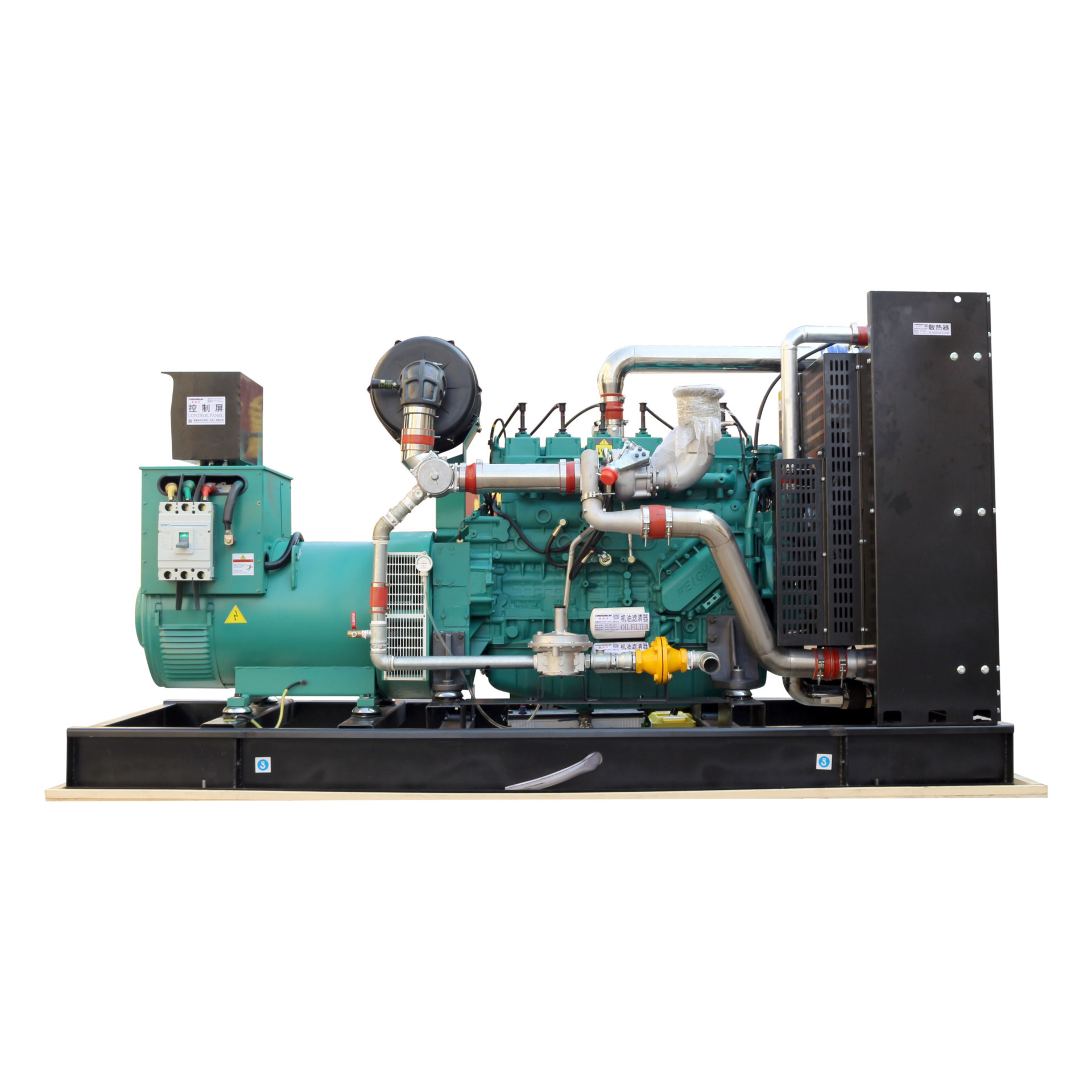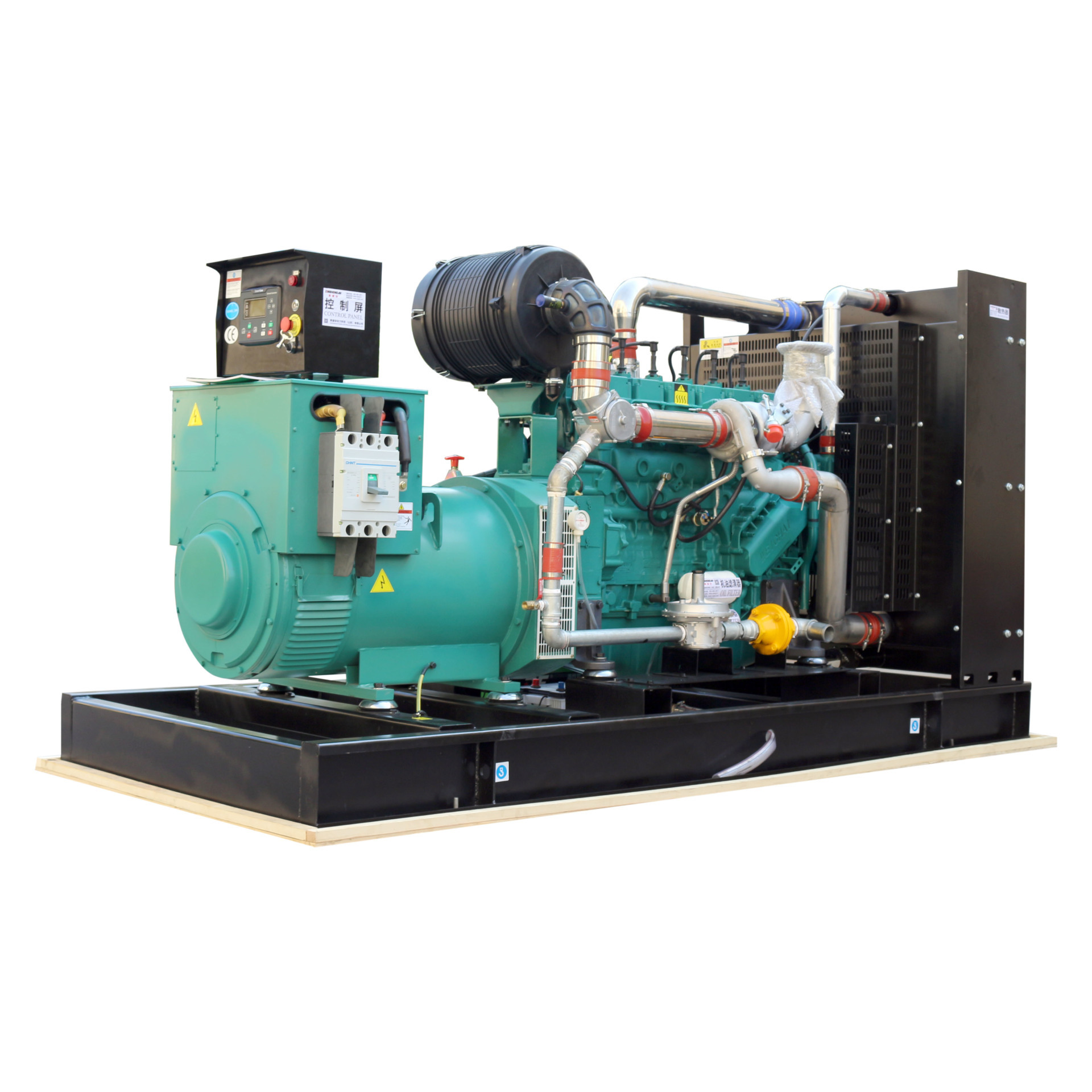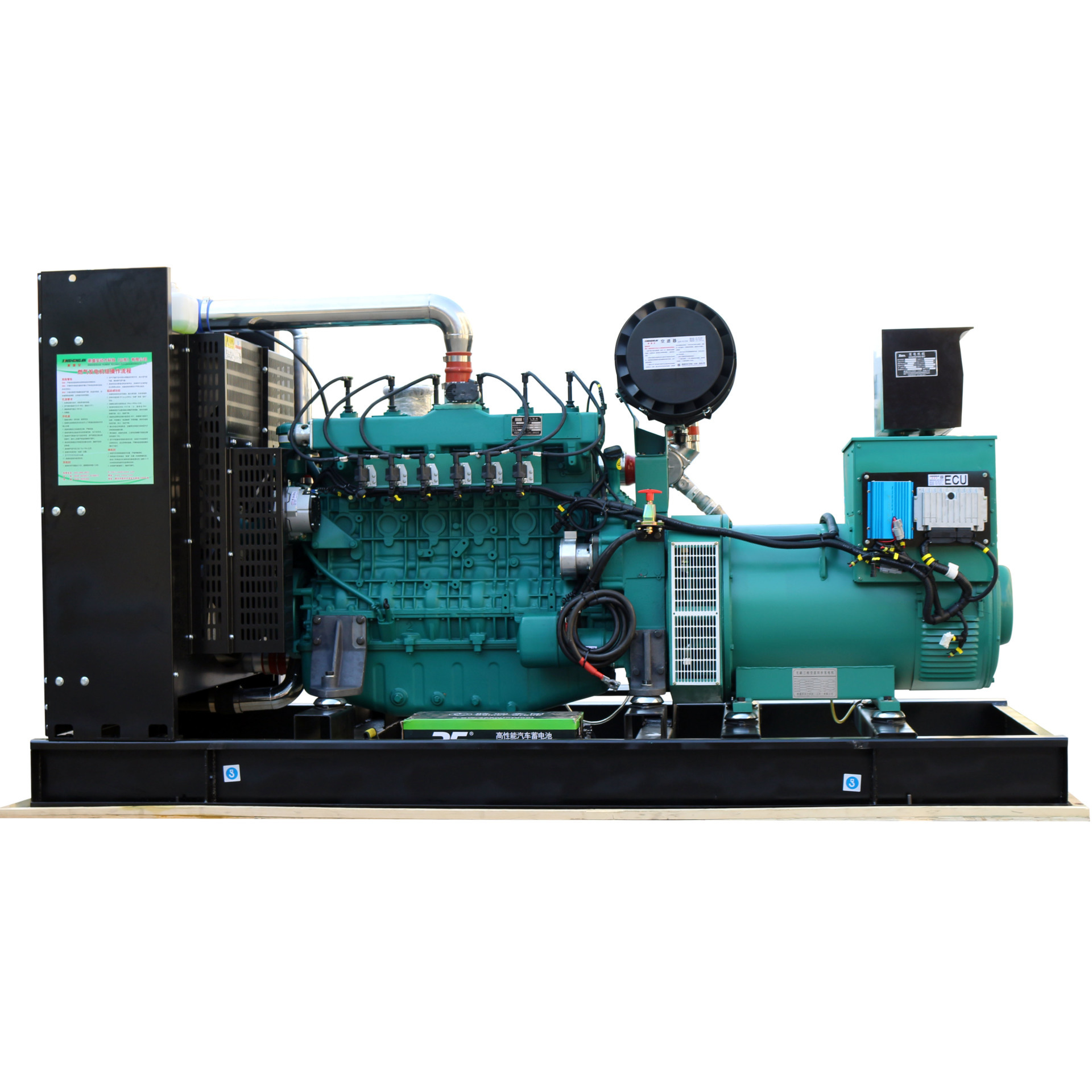Maintenance of common faults of diesel engine Diesel engine maintenance methods
Time:
2018-11-09 14:05
Source:
Maintenance of common faults of diesel engine
1. The diesel engine is difficult to start
(1) Check the low pressure oil circuit
① Check whether the diesel switch at the lower part of the diesel tank is turned on, use the drain valve to drain the water and dirty oil in the diesel tank; check and remove the water and dirty oil in the diesel filter and filter.
②Loosen the bleed screw on the pump body of the high-pressure oil pump, pump oil with a hand pump, and observe whether the low-pressure oil supply is smooth and sufficient. If there is still unclean air in the diesel fuel, check whether there is any air leakage in the pipeline before the manual pump, such as whether the pipe joint gasket is damaged, whether the pipe joint is tightened, whether the pipe is damaged or cracked, etc. When pumping oil with a hand oil pump, if you feel that it is difficult to get oil and suck oil, it means that there is a blockage in the low-pressure oil circuit. Check whether the filter screen of the diesel filter, the filter element of the diesel filter or the pipeline is blocked. When the temperature is low, check whether the diesel grade is correct and whether the oil passage is blocked due to diesel wax precipitation or water freezing. Remove the blockage until the oil is absorbed smoothly and the oil is discharged without air bubbles.
③When pumping oil with a hand pump, if the diesel oil is not pumped due to the above reasons, it means that the piston of the hand pump is excessively worn, or the valve is cushioned or damaged by dirt, or the seal of the hand pump is damaged, and the hand pump should be replaced.

(2) Check the high-pressure oil circuit
If there is no fault in the low-pressure oil circuit and it still cannot be started, check the working condition of the high-pressure oil circuit.
① Check whether the high-pressure oil pump oil volume adjustment rack is flexible, whether it is stuck in the oil stop position, or cannot supply oil due to other forms of damage.
②Check if the oil supply time of the high-pressure oil pump is correct. If the fuel supply time is incorrect, it should be adjusted to the standard timing.
③Exhaust the air in the high-pressure oil pipe. If there is air in the diesel high-pressure oil pipe, it is sometimes difficult to eliminate the diesel engine rotation by the starter, and the diesel engine is also difficult to start. To this end, loosen the bolts connecting the high-pressure fuel pipes of each injector, press the start button (or turn the start key to "start") and use the starter to drive the diesel engine to rotate until each high-pressure fuel pipe ejects fuel, and then tighten the high-pressure fuel pipe Connect the bolts.
④If the diesel engine still cannot be started up to this point, check whether the fuel injector and high-pressure fuel pump itself are faulty. The fuel injectors mainly have faults such as burnout, poor atomization and incorrect fuel injection pressure adjustment. High-pressure oil pumps mainly have troubles such as excessive wear of the plunger pair, which leads to insufficient oil supply pressure and breakage of the speed regulating spring. It should be noted that the adjustment of the high-pressure oil pump must be carried out on the high-pressure oil pump test bench; the same is true for the injector, which must have a pressure tester.

2. The diesel engine emits white smoke when it is working
(1) Check the water temperature
If the water temperature of the diesel engine is too low, the temperature in the combustion chamber of the diesel engine will be too low. After the diesel is injected, it is not easy to atomize and burn. Part of the diesel is still discharged in the form of droplets with the exhaust, and the smoke is white. When the diesel engine is working, when the water temperature is lower than 67°C, it is called cold state; when the diesel engine works in a supercooled state, it is very detrimental to its life. Active measures should be taken to prevent the diesel engine from working in a supercooled state. After the diesel engine is started, it should be idle for 3-5 minutes, and then work at the medium throttle and medium and small load to warm up the engine slowly. After the water temperature of the diesel engine reaches the green range of the water temperature gauge, work at the high throttle.
(2) Check and adjust the fuel injection advance angle
If the fuel injection advance angle is too small, the diesel fuel cannot be atomized and burned after being injected, and the oil mist is carried out with the exhaust gas, and the smoke is white or off-white.
(3) Check diesel quality
If the quality of diesel is poor, or there is too much water in the diesel, too much water vapor will be generated during combustion, which will be white or off-white smoke.

3. The diesel engine emits black smoke when it is working
(1) Check the air supply system
If the air intake of the diesel engine is insufficient, the amount of air entering the wood burning chamber is too small, the diesel is not fully burned, and part of the diesel becomes carbon black particles under high pressure to form black smoke. At this time, check: whether the air filter element and the intake duct are blocked ; Supercharger working condition, air intake
Whether the manifold is leaking; whether the gas valve phase changes, whether the valve is correct, whether the intake and exhaust valve seats are leaking; whether the piston, piston ring, and cylinder liner are excessively worn and poorly sealed.
(2) Check the diesel supply system
Poor fuel supply of the diesel engine will result in poor mixing. Even if the air intake is sufficient, it will not burn completely, thus forming black smoke. At this time, check: whether the high-pressure fuel pump is adjusted improperly, causing the fuel supply to be too large; whether the delivery valve is not working properly, causing it Secondary injection or dripping of the fuel injector; whether the fuel injection pressure of the fuel injector is reduced, resulting in poor atomization, dripping of the fuel injector, or the fuel injection is not in place due to the excessive or missing installation of the fuel injector gasket; The poor quality of diesel fuel causes poor combustion.

4. Diesel engine deflagration
When the diesel engine explodes, the pressure in the cylinder increases suddenly, and the piston violently knocks on the cylinder liner, causing great metal knocking sound and vibration.
(1) Check and adjust the fuel supply advance angle
If the fuel supply advance angle is too large, too much diesel is injected when the piston is near the top dead center, causing the diesel pressure to rise rapidly, causing the piston to knock the cylinder liner violently when it moves down.
(2) Check the quality of diesel
If the quality of diesel does not meet the national standards, and there are too many flammable components, it will cause deflagration when the diesel is injected into the cylinder, causing the pressure in the cylinder to rise excessively and causing the piston to knock.
(3) Check the running time of diesel engine overheating
The diesel engine runs overheated for a long time, and the temperature in the combustion chamber is too high. When the diesel is injected, the evaporation is too fast, the combustion speed is too fast, and the pressure rises too fast, which causes deflagration.
(4) Remove carbon deposits
Excessive carbon deposits in the cylinder liner and piston of the diesel engine cause the compression ratio to be too high and cause deflagration.

5. Troubleshooting for insufficient diesel engine power
Diesel engines will inevitably encounter insufficient power in the working process. When encountering such situations, don't panic. Use the deletion method to judge one by one. The following points are some methods to check their insufficient power for reference.
(1) Look at smoke and check wear
When the engine is working, open the oil port cover, if there is a puff of smoke coming out of the oil port cover, it is said that the bottom smoke is serious, indicating that the piston, cylinder liner, piston ring and other parts are severely worn.
Open the valve cover, if there is a trace of cyan or white smoke coming out of the root of the valve (valve working surface), it is said that the upper smoke is serious. The upper smoke is serious, indicating serious wear or ablation of the valve or valve seat, or valve clearance Too small or even no gap. By observing the smoking situation, you can directly see which valve and which cylinder is leaking, which should be repaired in time.
(2) Look at carbon deposits and check working conditions
The carbon deposit at the exhaust port of the diesel engine is dark gray, and the surface seems to be covered with a layer of hoar frost. The carbon deposit layer is extremely thin, indicating that the diesel engine is in good working condition. The color of carbon deposits is black and bright, but not wet, indicating that the diesel engine is slightly burning oil and should be removed in time; if the thickness of carbon deposits at the exhaust port of a cylinder is significantly higher than that of other cylinders, it indicates that the cylinder injector is not working well or the cylinder is tightly sealed. Deterioration should be repaired or replaced; individual exhaust ports are wet or oily, indicating that the cylinder discharges a large amount of oil and should be repaired; each cylinder exhaust port has thicker carbon deposits and darker color, mostly due to The working temperature is too low, or the fuel injection is too late, which is caused by the serious afterburning of the diesel. It should be used correctly and adjusted in time.
(3) Look at the water temperature and check the cooling system
If the cooling system water temperature is too high when the engine is working (over 100°C), it can indicate that the scale of the engine cooling water chamber is too thick or the relevant parts of the cooling system (thermostat, water pump, fan, etc.) are inefficient or failing.
(4) Check the gas timing and phase
After the engine has been working for a long time, the timing gear, cam surface, follower and tappet will wear out, which will delay the opening and closing time of the intake valve and exhaust valve and deviate from the optimal valve phase, which will reduce the charging efficiency. Engine power drops. Therefore, it is necessary to regularly check the engine valve phase, if it does not meet the requirements, it should be adjusted in time.
(5) Look at fuel injection and check stuck
The fuel injection of the fuel injection pump should not be deflected, dripping, uniform oil mist, and proper range. When working, you can hear a crisp "flapping, fluttering" sound, and there is a sense of pulsation when you touch the high-pressure oil pipe by hand. Good fuel injection does not completely mean that there is no problem with the oil circuit parts. Therefore, it is necessary to check whether the oil supply lever and shift fork are stuck or loose.
(6) Look at the ignition, check the morning and evening
To look at the ignition means to check whether the fuel injection timing, that is, whether the fuel supply advance angle meets the regulations. If the fuel supply is too late (the advance angle is too small), the diesel engine will be difficult to start, the combustion is not complete, the exhaust smoke, the engine temperature is too high, and the power is insufficient; if the fuel supply is too early (the advance angle is too large), the diesel engine will knock when it is working. The knocking sound can easily damage the parts, and it is prone to reverse when starting, and it will also affect it at the same time. To the engine power.
(7) Look at the compression force and check for leaks
Take the S195 diesel engine as an example. The method to check the compression force is to rotate the crankshaft without decompression. When the compression force is large, shake it upwards. Loosen the crank but keep your hands away from the crank. , If there is a large rebound force at this time, it means that the compression force is very good; otherwise, it means that the compression force is poor.
The reasons for the poor sealing of the cylinder: the valve has no gap or the gap is too small, the gap between the piston and the cylinder liner and the end face of the piston ring is too large, and the ring groove is carbonized. When the engine is working, if you hear a "hissing" blowing sound close to the air filter, it means that the air leakage is related to the valve. At this time, the cause of the fault can be confirmed by combining the smoke emission situation.
(8) Look at the smoke and check the color of the smoke
When the engine is working normally, there is generally no smoke or some light grayish white smoke, which is sometimes difficult to see with the naked eye. If it emits black smoke, it means that the cylinder has more oil and less gas, and the combustion is not complete; if it emits blue smoke, it means that the wear gap between the cylinder liner and the piston, valve and valve guide is too large; if it emits white smoke, it means that the fuel is mixed with water. , Or the diesel is not completely burned, and it emerges from the exhaust pipe after gasification.
Insufficient diesel engine power is a very direct and fatal problem. It is directly related to your engineering efficiency. Readers must read it carefully. Of course, more on-site practical experience is needed.

Relevant information
Why are gas-fired generator sets favored by everyone
The reason why gas-fired generator sets are recognized by various industries is because of their unique advantages, not just the superficial advantages.

